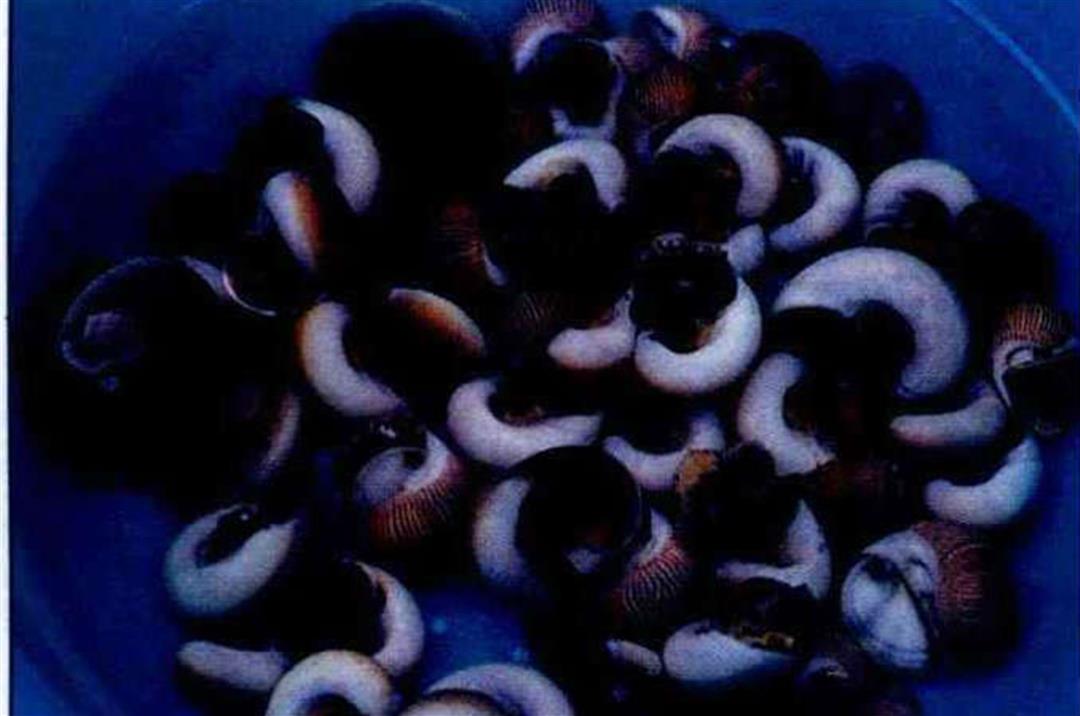The mullet, a representative variety, comes to Taiwan every year along with the northeast seasonal winds. Mullet which have grown to adulthood in rivers along the coast of mainland China put to sea to form schools and mate. At the same time they start to follow the 18 to 22¢X C isotherms southward from Japan to Taiwan. These long distance "national team" swimmers arrive in the seas outside of the fishing port of Hsingta in Tainan right around the winter solstice. This is the period of their full maturity. In the calm seas around Taiwan, in the warm waters at 40 meters and below, they lay their eggs, which produce fast-growing fry. With its unique combination of ocean currents, seasonal winds, and topography, Taiwan has been renowned as a place to catch mullet since the Ming dynasty.Mullet over
Taiwan's seafood is indeed a match for the four above-mentioned provinces of China, in technique as well as variety. This is because Taiwan's seafood cuisine, strongly influenced for a time by Japanese culture, also began to absorb the influence of mainland Chinese cooking after the Nationalist government came to Taiwan.
Although Taiwan is surrounded by ocean on all sides, today's situation, in which it is convenient and common to enjoy seafood feasts, is something that has only come about over the last thirty years or so. This development has been due to advances in catching, cultivation, cold storage, and transport of fish. The story of modern Taiwan seafood cuisine begins in Kaohsiung in southern Taiwan.
Chuang Ta-te, originally a fish dealer in Kaohsiung, opened a restaurant called Hai Pa Wang in 1973. This was the prelude to a boom in local seafood cuisine in Taiwan. As for why Chuang opened the restaurant at that time, Hu Kun-shan, assistant general manager at Hai Pa Wang, states: "On the one hand, of course, Kaohsiung is a seaport, so seafood is a natural. But even more important is that at that time the shipbreaking industry was flourishing in Kaohsiung, and it attracted a lot of labor from outside the city, especially from Penghu, whose natives are big seafood eaters."
Many established old seafood restaurants got their start in this period. The seafood restaurants at that time had no menus-you just had to see what the catch was for that day. The options consisted mainly of seafood captured near the coast of Taiwan.
Since then, seafood consumption has continued to grow, with seafood gaining popularity at weddings and other celebrations, and live fish restaurants popping up in every night market. The background to these developments included the general economic takeoff, a sharp rise in the number of fishing ships, improvements in fishing technology, and the burgeoning of the aquaculture industry.
In 1961, Taiwan had no more then 1000 or so motorized fishing vessels, and the annual seafood take was only about 300,000 metric tons. By 1984, the catch had surpassed one million metric tons. Today, Taiwan has more than 13,000 fishing vessels large and small, and annual production of seafood is in excess of 1.3 million metric tons.

Though there's plenty of milkfish raised in aquaculture ponds, there is less and less seafood being caught off the coast of Taiwan, and for unusual items you just have to get lucky.